Advertisement
What The Giant, Polyester Lotus Flower At The MFA Says About Life In Asia's Megacities
Resume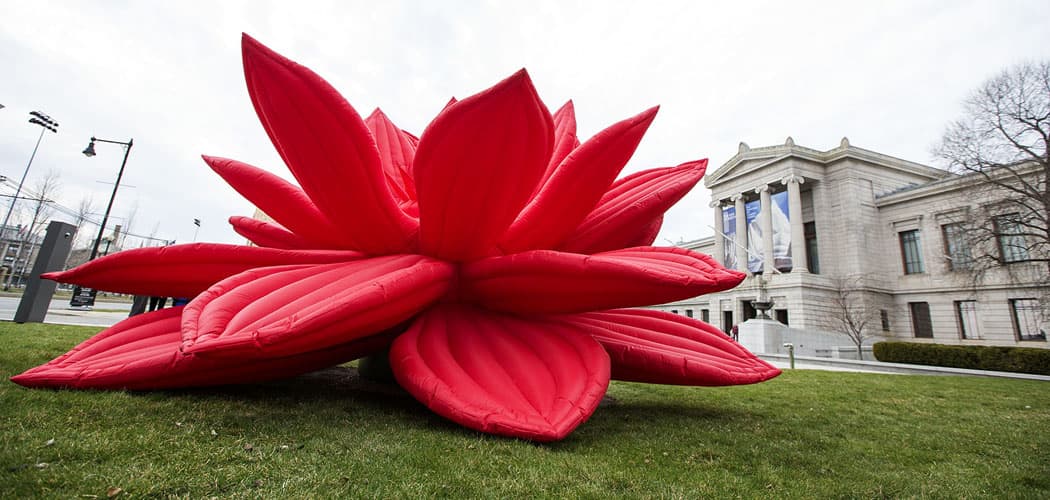
What do Seoul, Shanghai, Mumbai, Delhi and Beijing have in common, besides being in Asia?
Well, they’re all megacities featured in a new exhibition at the Museum of Fine Arts.
"Megacities Asia," as it’s called, is the largest contemporary art show at the MFA to date. Al Miner is proud of that fact. He traveled east with his co-curator Laura Weinstein to find the artists who populate it, and he happily clarified the term “megacity” for me on a recent visit to the Boston museum.
“Boston is not a megacity. Metropolitan Boston has about four and a half million residents,” Miner explained. “A megacity is by definition a city with more than 10 million residents.”
"Megacities Asia" explores how 11 artists process and express their feelings about living in rapidly expanding, densely populated metropolises. It features large-scale sculptures and installations by emerging and established practitioners, including famed Chinese dissident Ai Weiwei.
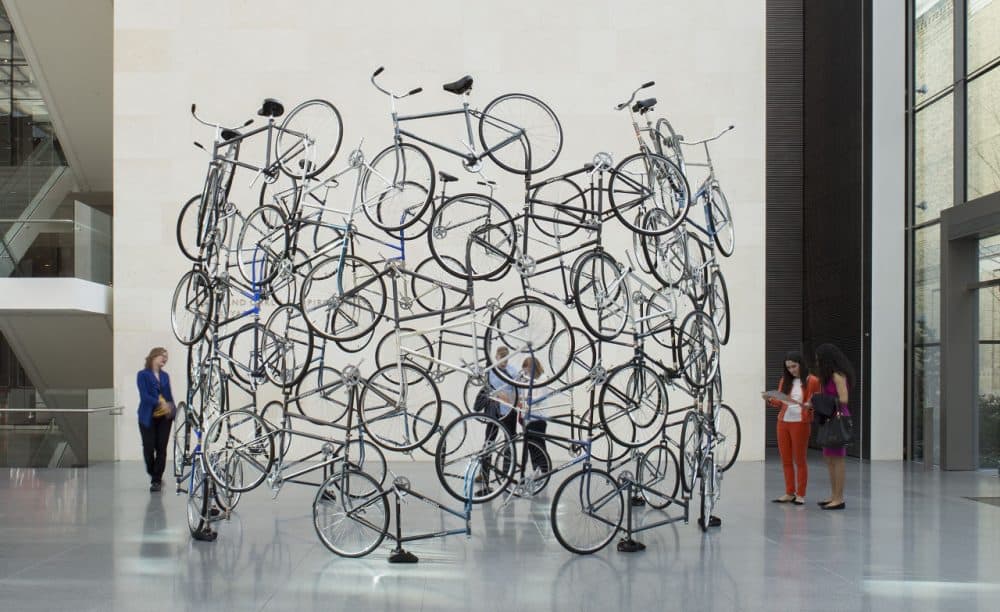
Most fill the MFA’s temporary exhibition gallery, but visitors have to seek out a few of them. The pieces Choi Jeong Hwa created can be found inside and outside of the museum.
On a recent gray day, Miner told me this Korean artist is something of an international rock star.
“He is one of the most, if not the most, visible and well-known living artists in Korea,” the curator said. “And he’s done a tremendous number of projects around Asia and in Europe. But American audiences, we’re a little bit behind the curve on an artist who’s wildly popular elsewhere.”
Miner and the museum want to change that with the four works Choi brought to Boston. His giant, motorized sculpture called “Breathing Flower” is out on the museum’s front lawn, slowly opening and closing its petals. It's an inflatable red lotus blossom, which is a traditional symbol of nature and beauty (and Buddhism) in Asia. But Miner says the artist wants people who see his mammoth, polyester flower to ponder his philosophy that in a modern megacity natural and artificial exist as equals.
“To Choi Jeong Hwa, a space like where we stand now on the lawn of the Museum of Fine Arts — which feels natural — is really man-made. This was manicured and landscaped by people, it didn’t just happen in the wild,” he said, continuing, “and flowers like this inflatable, or even plastic flowers, in a way might even be better than natural world because they never die.”
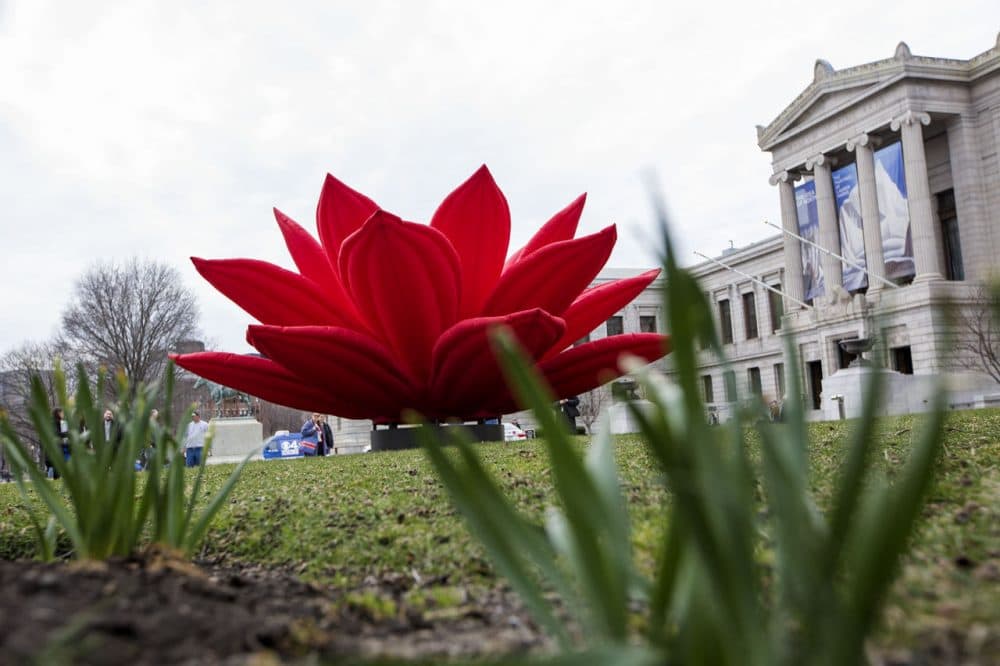
Choi — who actually looks like a rock star with thick, black-rimmed glasses — talks about his “Breathing Flower” with the help of MFA librarian Hee Jung Lee, his interpreter.
“The nature and man-made objects are not two different things but they are one,” she said following on the artist’s words. “He thinks the 'Breathing Flower' on the street is trying to lure people into the museum.”
And that’s what the curator and the artist hope it will do. Choi accepts the ubiquitousness of artificial materials, and that acceptance of reality reveals his Buddhism-inspired view of the world. The sculpture he made for inside the museum expresses that, too.
It’s a huge, glittering mandala — or Buddhist prayer wheel — made with a mass of carefully arranged, cheap and gaudy plastic chandeliers. The room it’s situated in plays a role in the installation, too. It's covered with reflective Mylar that makes the space feel wall-less and boundless. Through his interpreter, Choi explained his thinking.
“As this room shows he wants to emphasize the importance of trivial things becoming infinite,” she repeated in English. “He thinks that the key concept in all of the objects in Megacities is all about accumulation.”
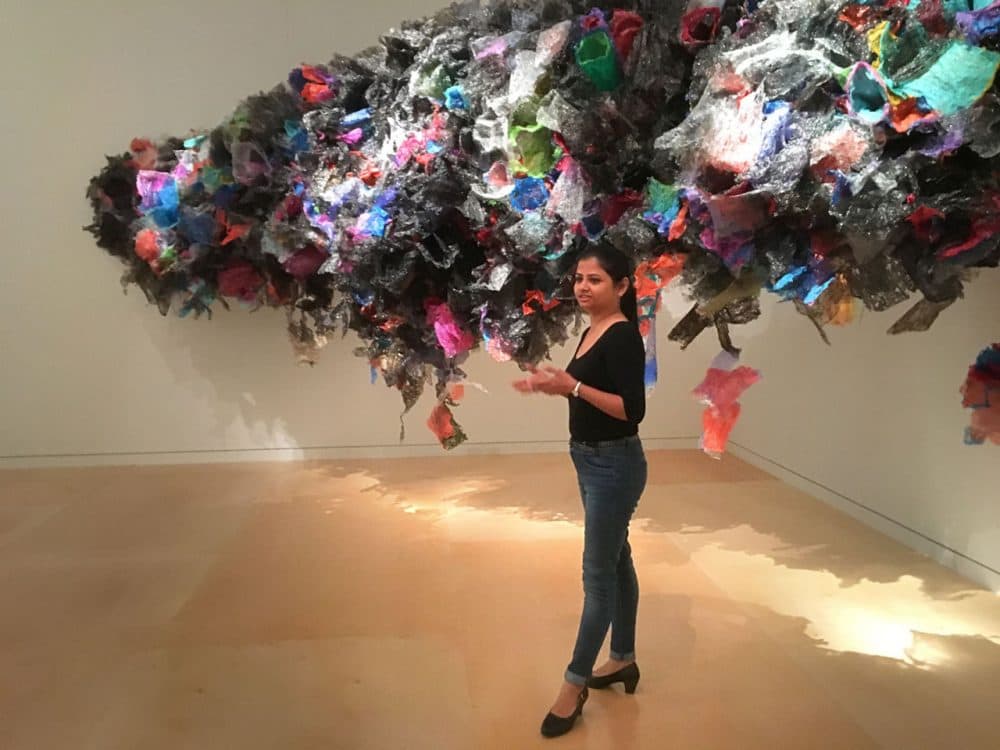
Accumulation also inspires the youngest artist in the show. Thirty-five-year-old Aaditi Joshi is from Mumbai, population more than 20 million.
“I see a kind of beauty in plastic,” she told me, speaking of her medium of choice.
Joshi makes art out of the plastic bags that plague her megacity. Then she gathers piles of them, gently melts each one individually, paints them, then arranges them into sculptures. The one currently in the MFA's gallery hangs in the air like some huge, colorful trash creature. It's an expression of the young artist's complex feelings about the material.
“People always keep saying, ‘Don’t use plastic,’ but then again there is also the other side of the plastic is that we cannot live without plastic,” Joshi mused. “We are so much surrounded by it, and we cannot deny its presence on this planet.”
Joshi doesn't deny how damaging plastic bags can be, either. She recalls how they choked Mumbai’s drain pipes during the flood of 2005. That destructive, messy image continues to influence her work today.
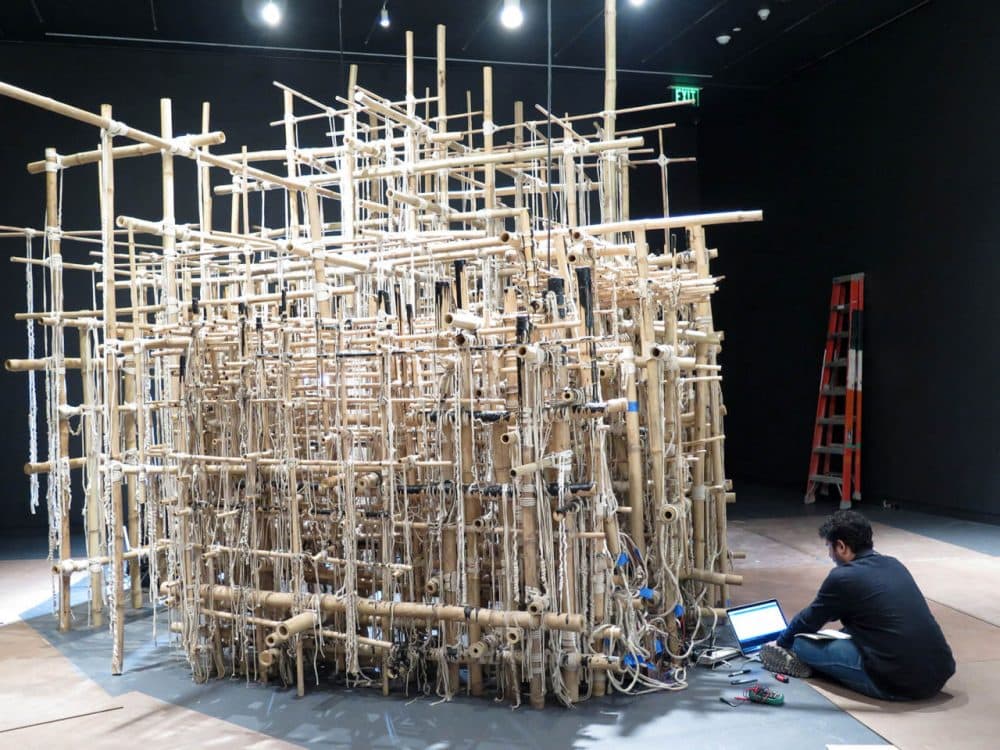
Curator Al Miner says while many of the works in the Megacities exhibition share themes of accumulation, pollution and over-development, each has its own unique story to tell.
“To go from a piece like Aaditi’s that’s so bright and so colorful, to a piece like this made of bamboo, or a piece like this made of just salvaged construction rubble — there’s a nice ebb and flow I think as you walk through the show,” he said.
In the gallery, visitors are invited to step around, under and through the installations, including Asim Waqif's bamboo sound structure.
“Some sounds are activated by shadow, some by touch, some by your weight,” he explained while triggering little chirps and vibrations.
This architect-turned-artist lives in Delhi where he says an unprecedented wave of new construction is un-relenting. His piece explores the legacy of bamboo as a popular building material in India.
“Unfortunately the way laws are today, and the way developmental economics work, traditional architecture has become very difficult to practice, in some cases even become illegal. Industrial materials are promoted more. In some ways, I’m trying to see if I can work against that,” Waqif said.
Curator Al Miner says the interplay and tension between artificial and natural, old and new, drive many of the artists here — along with the sheer volume of stuff that fills their densely populated megacities.
“Being from five of the world’s most rapidly growing and quickly developing cities, they’re seeing change right before their eyes in their home cities,” the curator said, adding, “and that’s spawning a lot of their response in the form of artwork.”
Many of the artists hope visitors respond back by taking photos of the installations and sharing them on social media. Korean artist Choi even placed a faux-elegant chair in his sparkly mandala installation so people can pose for portraits.
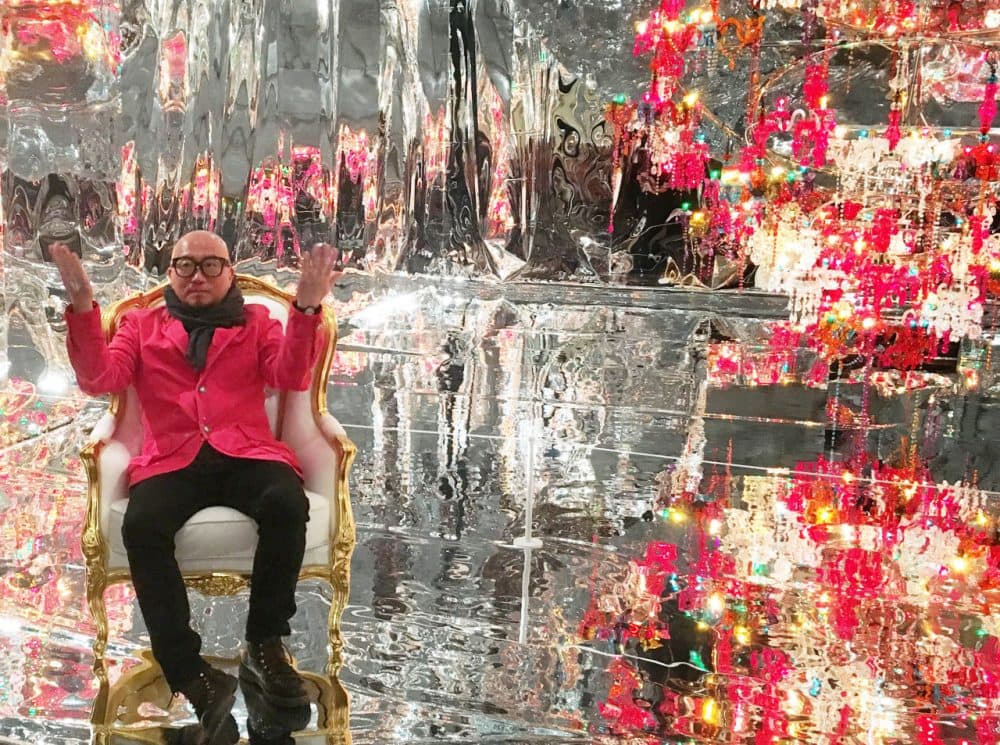
He reflects on the challenges rapid urbanization creates in all cities — not just megacities.
“Accumulation means that you are losing stuff, you are feeling lonely and you're overwhelmed by the accumulation,” his interpreter channeled, “so he wants to emphasize that aspect of human life in contemporary societies.”
With that the artist added one more thought: “With the lens of love nothing can be left unseen.” Then he sat back in the white chair and smiled as his picture is taken.
Over the weekend, one more work by Choi was installed at Faneuil Hall as part of the MFA's Megacities Asia. It's a giant fruit tree. (Check out a time lapse of the installation.)
